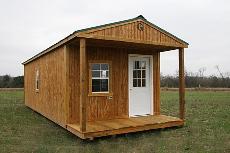Many start-up businesses, and growing ones, face the challenge of having a building space to work from. While you can opt to build or rent a permanent building it takes time to get it ready for business use. It also requires significant investment and high operating cost. There is another alternative in terms of portable building that can provide cost effective solution. Portable buildings are just what the name suggests. They are not built to stay in the ground permanently. Rather they can be erected quickly and provide the solution that is not only cost effective, but also environmentally friendly. Here are some additional details on the benefits and types of portable buildings.
Benefits of Portable Buildings
Today’s portable buildings offer business owners a number of great benefits. When it comes to portable buildings, the environmental footprint is drastically reduced compared to a traditional structure. No ground displacement is required and buildings that are equipped with electricity and HVAC systems are typically engineered to make the most out of the power they have.” An eco-friendly construction is also a cost effective one, a definite benefit for budget-conscious businesses.
Cost is an overall benefit of portable structures. It costs far less to construct them than a traditional and permanent building, providing businesses with the operating space they need without compromising their budget. There are also far fewer labour costs associated with constructing a portable building, which makes this one of the most cost-effective solutions for securing added business space. Plus, if you need you space created quickly, portable buildings can be constructed in a fraction of the time it takes to build a permanent structure with a foundation.
Types of Portable Buildings
Business owners have various options when it comes to portable building space. Temporary buildings are typically constructed to support the business for anywhere from a few months to three years. Climate and duration of use will necessarily impact the type of material you choose for the construction of your permanent building. While insulation can be an issue with these types of constructions, they can generally be secured to any ground surface and come in vast array of sizes to suit a business’s needs.
An interim or semi-permanent building is ideal for businesses that require the space to last for roughly seven years. These structures are energy-efficient, easy to construct quickly, and provide considerable stability. More durable materials are also used to construct these portable buildings.
A permanent steel building is usually designed to function more than three years. Extremely cost-effective, this solution is considered to be as secure as any other building, and, yet, it is still more expedient to construct than a traditional building.




No comments:
Post a Comment